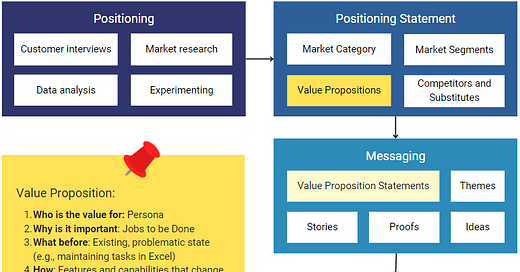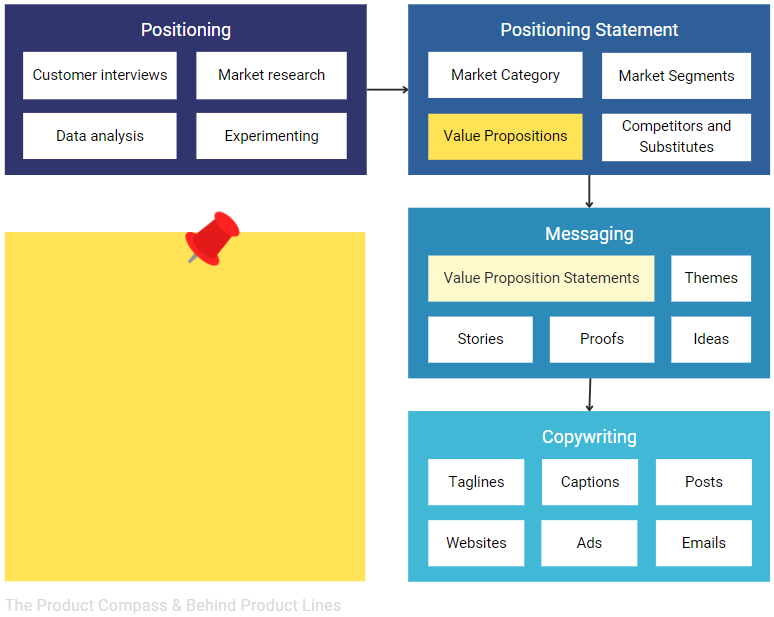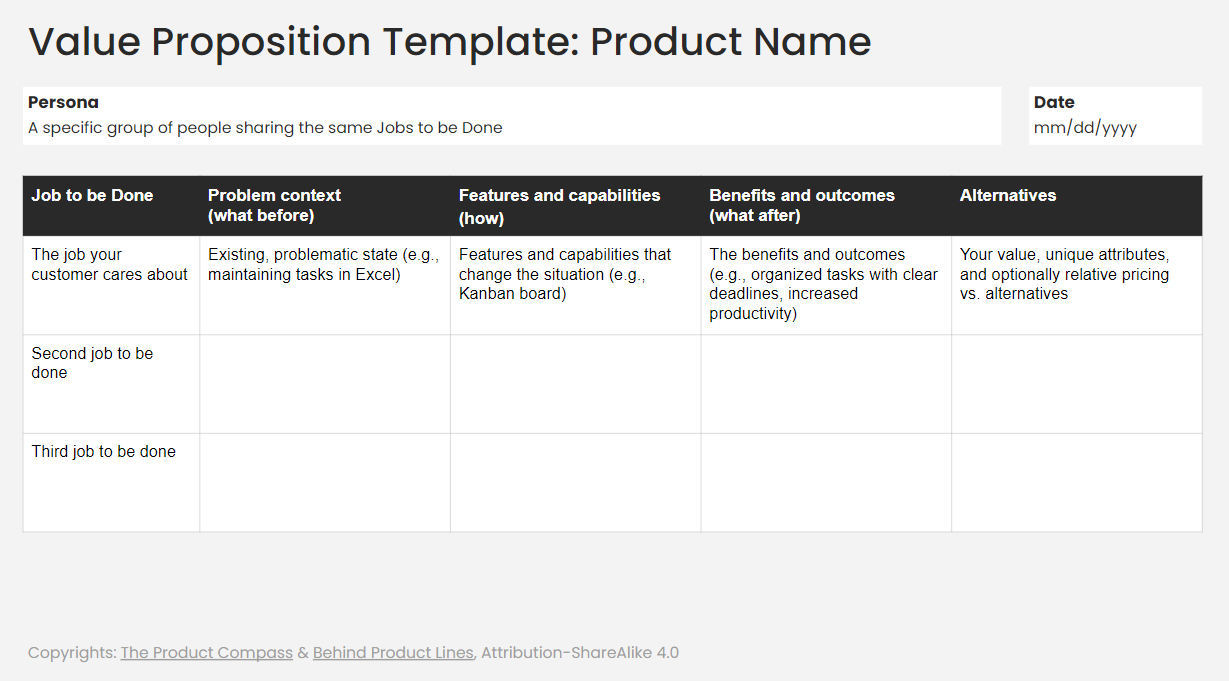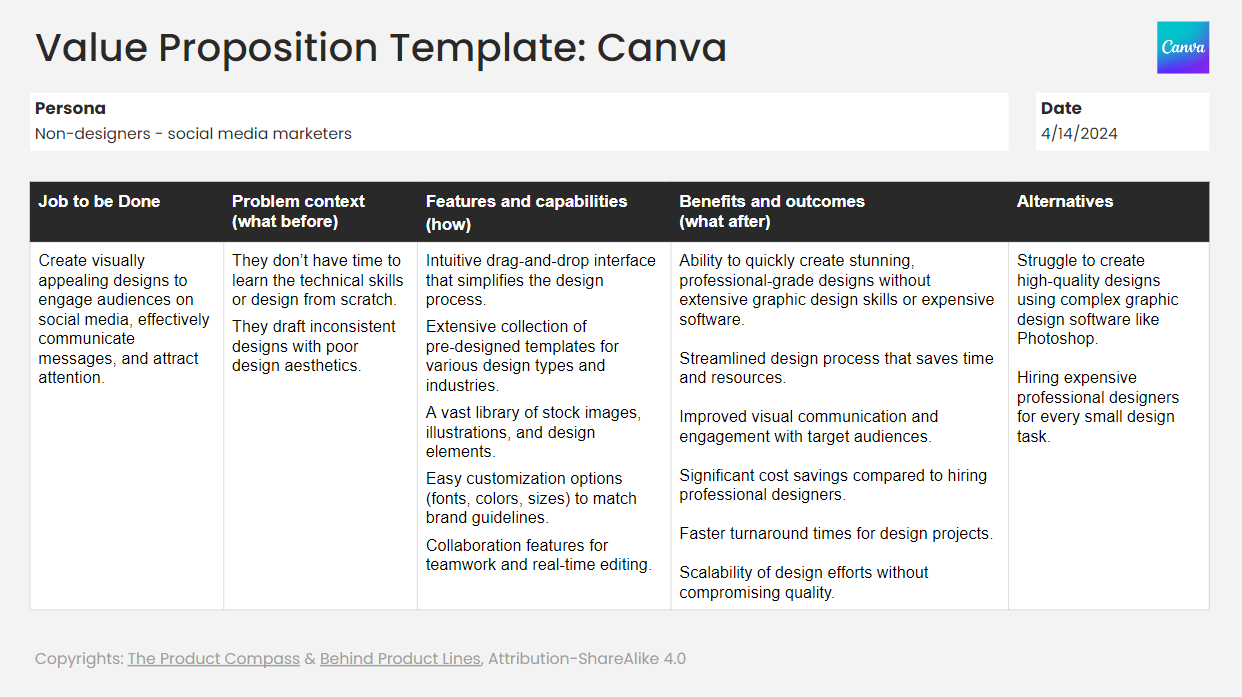How to Design a Value Proposition Customers Can't Resist?
What Is a Value Proposition? Best Practices. Value Proposition Template. Canva Value Proposition Example. Positioning vs. Messaging vs. Copywriting.
Hey, Paweł here. Welcome to the premium edition of The Product Compass.
Every week, I share actionable insights and resources for PMs to help you grow as a professional.
If you are not a premium subscriber, here’s what you might have recently missed:
How to Write a Product Requirements Document? The Best PRD Template
Product Management vs. Product Marketing vs. Product Growth 101
My goal for the next 12 months is to increase your market value by 30%. If you upgrade in April 2024 with an annual subscription, you get a 12-month money-back guarantee, no questions asked:
This post is the result of a collaboration between
and myself, . We used "I" in the text solely for stylistic reasons.Aatir is the VP of Marketing at vFairs, leading a global team of marketers to drive demand and revenue. He regularly writes about product management and marketing tips on LinkedIn and authors the "Behind Product Lines" newsletter.
Highly recommended:
How to Design a Value Proposition Customers Can't Resist?
Recently, in Paweł’s closed Slack community, we’ve been discussing a Value Proposition.
Unfortunately, terms such as positioning, Value Proposition, value proposition design, pains, gains, benefits, and jobs and how they connect can be confusing. And it’s difficult to find reliable information.
Yet, the Value Proposition is a fundamental concept for Product Managers and Product Marketers.
So, in today’s newsletter:
Positioning vs. Messaging vs. Copywriting
What Is a Value Proposition?
Value Proposition Canvas by Strategyzer And Its Disadvantages
A Recommended Value Proposition Template
Canva Value Proposition Example
🔒 How to Use Value Proposition to Define Messaging
🔒 Canva Value Proposition Statement Examples
🔒 Final Thoughts And Conclusions
1. Positioning vs. Messaging vs. Copywriting
Let’s start with a few definitions to align on the basic terms.
Positioning
Positioning is an internal activity that defines how your company wants to be perceived by its target customers. It involves identifying your main product category, specific market segments, differentiated value for a particular persona, relative pricing, and competitors.
April Dunford says it best:
“Positioning defines how your product is a leader at delivering something that a well-defined set of customers cares a lot about.”
It’s like creating mental boxes in the customer's mind and then showing how your product is the best choice in each box.
The result of Positioning is a Positioning Statement (or Positioning Strategy) - a document that articulates the broader product category you’ll play in and how your product provides unique value far better than competition or alternatives for a target user segment. The document can take different shapes and forms, like a narrative one-pager or a tabular view.
Product marketers have recently been criticizing the traditional Positioning Statement formula. I included this criticism in this post.
Messaging
The next important term is Messaging, which refers to the overarching themes, ideas, and Value Proposition Statements your company wants to communicate to its target customers based on the Positioning Strategy. It is often developed at a higher level, focusing on the core benefits, differentiators, and customer needs that a company wants to emphasize.
Messaging defines the most important points you want customers to know and understand. They are the foundational pillars and your core line of reasoning to get buy-in from customers.
Copywriting
Finally, Copywriting is an activity related to writing text (copy) for different marketing materials, such as websites, advertisements, product descriptions, email campaigns, and social media posts, based primarily on Messaging.
Messaging determines what to say. Copywriting is “how” you say it.
For more information, you can check this LinkedIn post.
2. What Is a Value Proposition?
Now, we can dive into the Value Proposition. What exactly is it?
The Value Proposition is the fundamental concept that describes the unique value your company offers its target customers.
The Value Proposition defines:
Who is the value for: Persona
Why is it important: Jobs to be Done
What before: Existing, problematic state (e.g., maintaining tasks in Excel)
How: Features and capabilities that change the situation (e.g., Kanban board)
What after: The benefits and outcomes (e.g., organized tasks with clear deadlines, increased productivity)
Alternatives: your unique value, unique attributes, and optionally relative pricing vs. competitors and substitutes (often represented as a Value Curve).
Value Propositions are great alignment tools for PMs, leadership, and cross-functional teams. It’s also an essential part of your product strategy.
The two concepts related to the Value Proposition:
Value Proposition Statements - Represented in the diagram above by a light-yellow rectangle, these are reusable blocks of text that you can use to craft targeted marketing content, sales presentations, or customer onboarding messages.
Designing a Value Proposition - This activity involves refining your Value Proposition through customer interviews, market research, data analysis, and experimentation. I didn’t present it on the diagram, as it may, but it does not necessarily overlap with Positioning activities.
3. Value Proposition Canvas by Strategyzer And Its Disadvantages
You might know the book Value Proposition Design by Alexander Osterwalder and others. The title refers to creating a Value Proposition as part of Positioning.
It explains how to come up with a canvas that represents a Value Proposition:
The left part of the canvas represents multiple products and how they address the specific gains and pains of the target market segment.
The right part of the canvas represents the market - customer jobs, gains, and pains.
For example:
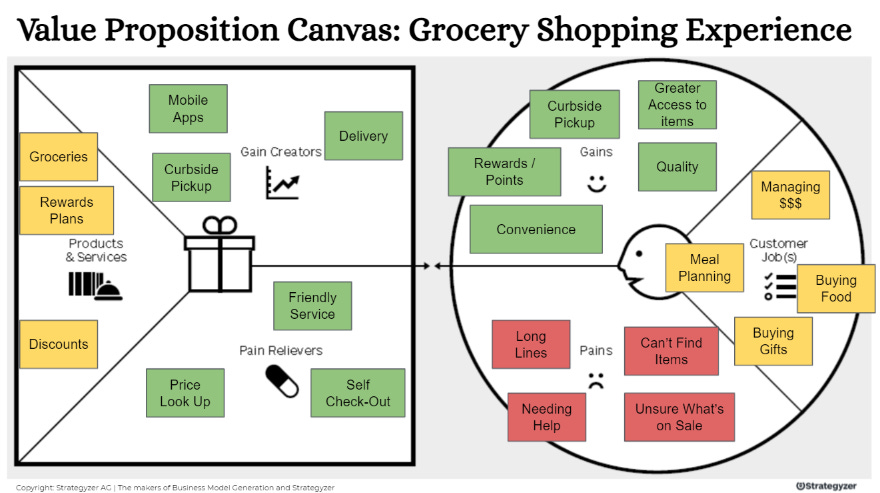
What I never fully liked about the Strategyzer approach:
It focuses on multiple products at once. It’s unnecessary if you want to design a Value Proposition for a specific product.
People read from left to right, and in product management, we start with the customer; therefore, placing the market part on the left would be more intuitive when designing a Value Proposition. It would also better align with how we perform product discovery.
In the Jobs-to-be-Done framework, we decompose jobs into steps and identify the desired outcomes for each step (minimize/maximize). But the Value Proposition Canvas lumps jobs, pains, and gains without explaining their connections.
It doesn't clarify what gain/pain relief each product/service offers. You can add arrows, but the picture loses its clarity. It is not a good Value Proposition format for later use.
It’s hard to decipher prioritization. All pain points and gains seem equally important.
Rather than talking about pains and gains, a more common, simpler formula marketers use is listing “benefits.” For example, a benefit might be “Avoiding long lines” or “Convenience.” The context clarifies the direction of improvement.
It doesn’t mention existing alternatives or workarounds and why your Value Proposition is significantly better.
4. A Recommended Value Proposition Template
A simple way of representing a Value Proposition with all the important elements:
5. Canva Value Proposition Example
Now, let’s define a Value Proposition for one job to be done and one market segment for Canva:
Who is the value for: Persona
Non-designers like social media managers.
Why is it important: Job to be done
Social media marketers need to create visually appealing designs to engage audiences on social media, effectively communicate messages, and attract attention.
What before: State before (existing problematic state)
They don’t have time to learn the technical skills or design from scratch.
They draft inconsistent designs with poor design aesthetics.
How: Features and capabilities that change the situation
Intuitive drag-and-drop interface that simplifies the design process.
Extensive collection of pre-designed templates for various design types and industries.
A vast library of stock images, illustrations, and design elements.
Easy customization options (fonts, colors, sizes) to match brand guidelines.
Collaboration features for teamwork and real-time editing.
What after: The benefits and outcomes
Ability to quickly create stunning, professional-grade designs without extensive graphic design skills or expensive software.
Streamlined design process that saves time and resources.
Consistency in brand visuals across all designs and platforms.
Improved visual communication and engagement with target audiences.
Enhanced brand image and professionalism in visual content.
Significant cost savings compared to hiring professional designers.
Faster turnaround times for design projects.
Empowerment of non-designers to create high-quality visuals independently.
Scalability of design efforts without compromising quality.
Alternatives: Your unique value, unique attributes, and optionally relative pricing vs. competitors and substitutes
Struggle to create high-quality designs using complex graphic design software like Photoshop.
Hiring expensive professional designers for every small design task.
You would fill it in like this:
6. How to Use Value Proposition to Define Messaging
Keep reading with a 7-day free trial
Subscribe to The Product Compass to keep reading this post and get 7 days of free access to the full post archives.

